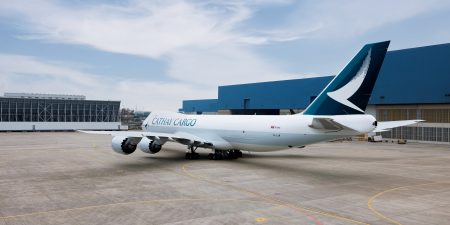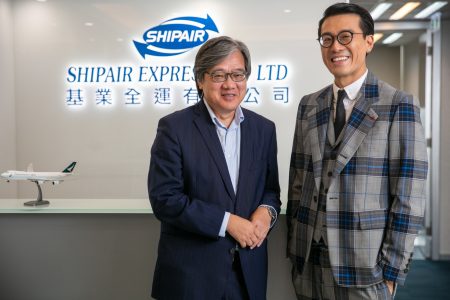Tell us more about Shipair
Shipair was started in 1991 by my father, Kenneth Yu, who had previously worked at Wilson Company as sales manager for its airfreight division. Initially, it was more of an ocean freight business; now it’s probably 60 per cent airfreight. We have around 60 people in our head office in Hong Kong and seven in our warehouse in Tsing Yi. Then we also have 11 offices in the Chinese mainland. In terms of employees the two biggest offices are Shenzhen, where we have around 40 people, and Shanghai, where we have about 30. The other offices are smaller, and the offices in the Chinese mainland have a higher ocean-freight ratio. We started out with a focus on Europe, and that is how we established our relationship with Cathay Pacific.
What are your main products and shipments?
We are 80/20 exports against imports. We do everything we can to have a good mix of shipment types and to remain agile. Many years ago, we used to handle a lot of garments, but since the garment factories moved from Southern China, the big one now is e-commerce – mobile phones, and all the electronic stuff that need lithium batteries. This means working with e-commerce platforms, and maybe some of the smaller manufacturers that list goods on eBay or Taobao. One of the reasons that a lot of e-commerce goes via Hong Kong is because of lithium batteries, because of the ease and superior handling.
What has been the most significant development for Shipair in 2020?
We have installed two scanning machines in our warehouse. There is a requirement for export shipments from Hong Kong to be scanned. The phased introduction started this year. Previously, only about one per cent of cargo – except to some destinations – was scanned in Hong Kong. The phased introduction started earlier this year with 25 per cent of shipments needing to be scanned, then 40 per cent from April, 70 per cent from September, and it will go to 100 per cent in March 2021. It does add complexity. For now we are screening ‘not-so-urgent’ shipments, but it might get more challenging later on. We were an early adopter and for this to work practically we have two machines: the bigger one for scanning pallets, while the other is for loose cargo.





